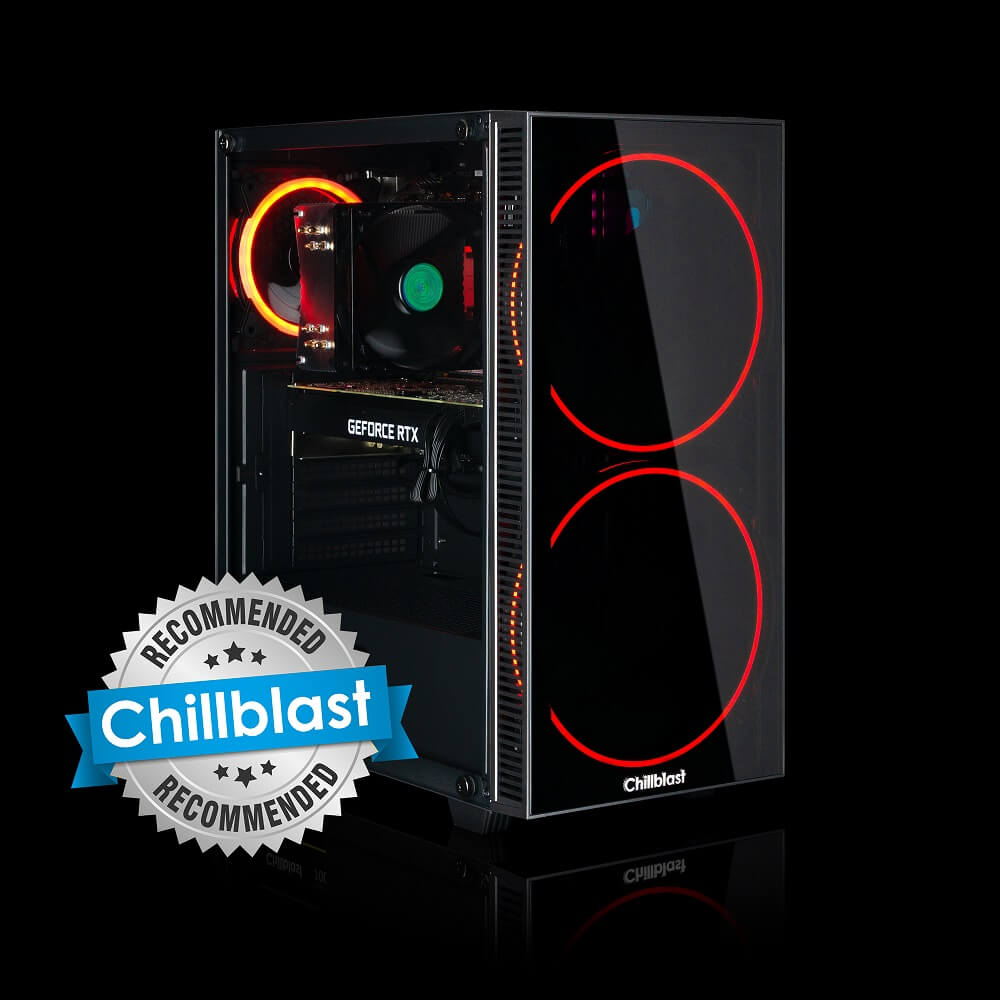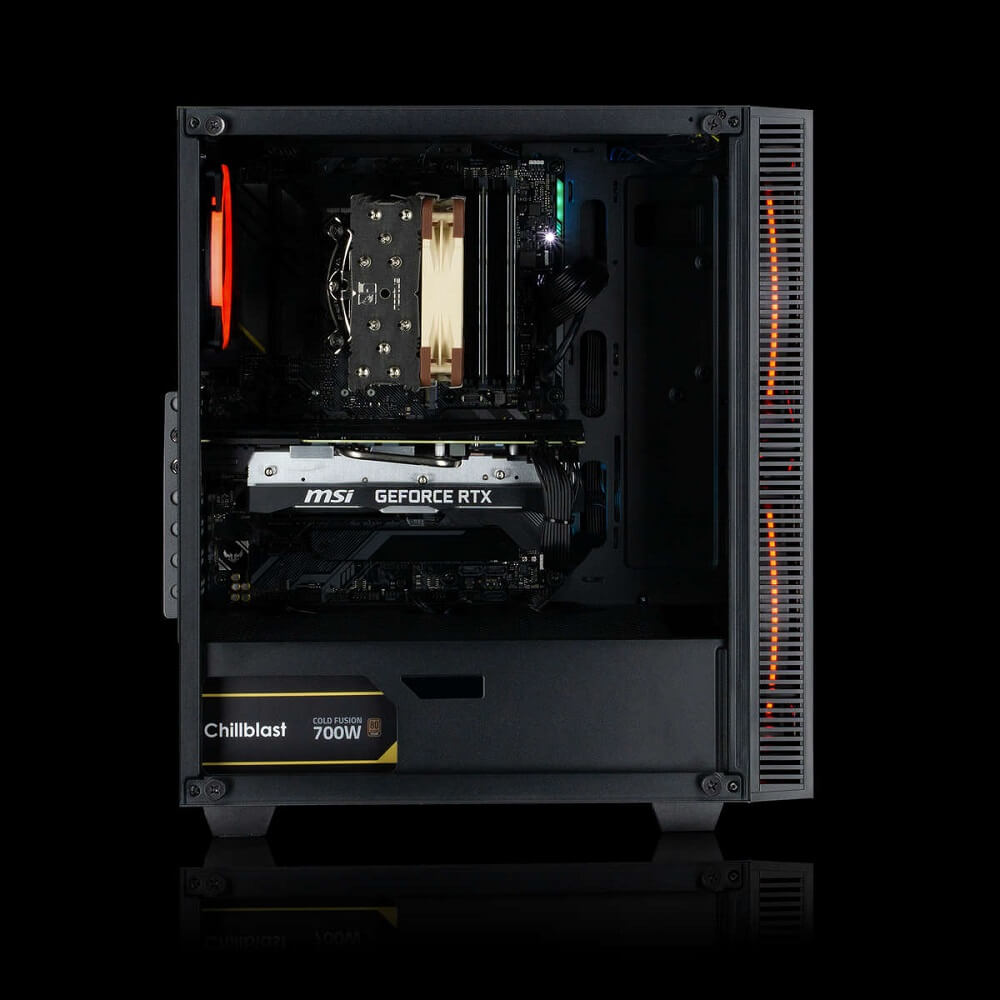Buying a new graphics card, especially a high-end graphics card like an Nvidia RTX 2080 or RTX 2080 Ti, is a big decision. Unless you’re one of a select few who buy the latest and greatest every year (and if you’re not sure about which to buy, that probably doesn’t apply to you) then this is the card you’re going to be playing games with for years to come.
So, whether to get the second-best card or spend a few hundred pounds more to get the absolute best, is an important choice to make.
As with any component question, there are many personal factors which should be considered. Your budget is the most important and Chillblast would always advise to only buy things (computer components or otherwise) that you can reasonably afford. There are certainly plenty of more economical options if either of these cards are outside or on the limit of your respective budget.
But if you have some money to burn and want one of the most powerful graphics cards in the world, then there are some important factors to consider when it comes to making your choice.
2080 vs. 2080 Ti, what’s the difference?
The 2080 Ti has almost 50 percent more shader processors (bits of code that tells the computer how to render each pixel) than the RTX 2080 – 4,352 vs. 2,944 – which more than makes up for its lower boosted clock speed of 1,545MHz. The 2080, on the other hand, enjoys a clock speed in excess of 1,710MHz, depending on the manufacturer.
The RTX 2080 Ti also enjoys much greater memory bandwidth, with 616GBps, vs. the 2080’s 448GBps, thanks to its 11GB of GDDR6, where the 2080 has just 8GB. It even features more capable ray tracing (RT) and DLSS processing (deep learning super sampling), with 68 vs 46 RT cores, and 544 vs. 368 tensor cores, respectively.
All of that results in a real-world performance difference of between 10 and 30 percent, depending on the game or benchmark, with greater enhancement to be found with the 2080 Ti at higher resolutions and in particular with ray tracing enabled.
Ray tracing still cripples both cards at 1440p or above, but you will get a much smoother and more consistent experience with the 2080 Ti than you would with the 2080. The same goes for general 4K gaming, where the 2080 Ti remains the best card for the job, even if the 2080 does a decent job of it.

Bang for buck
If all you care about is raw speed, there’s no real question here: get the RTX 2080 Ti. It is significantly faster than the 2080 in every game and benchmark and if you’re planning to play at 4K, or with heavy ray tracing effects, it’s the best card for the job.
But that’s far from the whole story. The 2080 Ti is significantly more expensive. At the time of writing, you’d have to spend at least £1,000 for even a basic blower version of the card. Nvidia Founders Editions versions start at £1,150 and there are hybrid and enhanced cooling versions which can cost £1,500 or more.
Conversely, the RTX 2080 can be had for around £600, even with advanced cooling.
The Chillblast Perspective
From the Chillblast perspective, our next-day Fusion RTX 2080 Super (which actually has an RTX 2080 Super under the hood, more on that below) costs just £1,825. In comparison, the cheapest 2080 Ti-equipped system we offer is the Fusion Nimbus 5 Flight Sim PC. It’s an amazing gaming PC, but it starts at £2,700.
It’s padded out with a 8-core Intel Core i7-9700K, 16GB of high-speed memory and terabytes upon terabytes of super-fast storage. But it’s still nearly double the price of the very capable RTX 2080 Super gaming PC, and even more so than PCs equipped with the base 2080 model.

You can twiddle the numbers a little by playing with our system configurators, pushing all of your funds into the GPU and making some savings on the processor, memory, case, storage, or cooling, but there’s no getting around the fact that the RTX 2080 Ti is a very expensive graphics card.
Yes, it’s very powerful – only second to Nvidia’s workstation-focused Titan series GPUs – but if you care about value for money, the 2080 offers a lot more bang for buck.
To Super, or not to Super
If you’re buying a new high-end Nvidia graphics card, then you’d be remiss if you didn’t also consider Nvidia’s latest entries in the RTX-range: the Supers.
At around £500 for an aftermarket version with reasonable cooling, the RTX 2070 Super is worth considering as an alternative, as its performance is within 10 percent of the stock 2080 – that doesn’t factor in overclocking, but the 2070 Super should be part of the conversation if you’re considering a 2080.
The best of both worlds? 2080 Super Vs 2080 Ti
But if the 2080 is your floor and the 2080 Ti your ceiling, then the more important card to consider is the 2080 Super. An enhanced version of the 2080 with 128 more CUDA cores, more than 100MHz of additional boost clock, and 15.5Gbps memory that makes it not only faster than the 2080, but faster than 2080 Ti.
It doesn’t have the same bandwidth as the higher-priced card due to a difference in memory totals (the 2080 Ti has 11GB where the 2080 Super still has 8GB), but that speed is noticeable and is arguably more important for gaming than the RTX 2080 Ti’s additional physical memory.
The price could be the most important factor though. At around £700 for the more modest 2080 Super graphics cards, it represents a tangible performance uplift over the stock 2080. It has additional Tensor and RT cores too, although you aren’t likely to see much real-world performance improvements from them.
Real-world performance differences tend to be around the five percent mark in most games, but there are some, at higher resolutions, where it can stretch to nearly 15 percent. That’s a sizeable increase over the 2080 and closes the gap with the 2080 Ti ever so slightly – for £300 less.
Fusion RTX 2080 Ultimate
To enjoy the newest 10th Gen Intel CPU alongside this powerful graphics card, you could get our Fusion RTX 2080 Ultimate PC for not too much more than our base Fusion RTX 2080 Super model. It pairs the all important RTX 2080 Super with an Intel Core i7-10700K CPU, 16GB of DDR4 memory, and plenty of both SSD and HDD storage.

So, which should you buy?
As we said at the very start of this article, which graphics card you buy will always depend on your own personal limitations and interests.
If you have no budget, the RTX 2080 Ti is going to be your best bet, but if you factor in heat output, power requirements, noise, and looks, there are some third-party options that will be better suited to you than others.
If budget is important, then the 2080 Ti should be removed from the running of this race, as it’s simply too expensive to really consider, especially when it’s not that much faster than the others. But the RTX 2080 vs 2080 Super is a much harder choice to make. They’re pretty close in performance and price.
The £100 buys you an additional five percent performance in some cases, but as much as 15 percent in others. If that’s worth the additional money to you, then you have your answer.
But none of this invalidates the stock 2080. It’s still an excellent card, with 1080 Ti-levels of performance, good ray tracing and DLSS capabilities, and a wide array of cards to choose from.
If you’re still not sure which card is right for you, give us a call. Our expert Chillblast system builders can talk you through your needs and requirements to find the right card for you. And we’ll even help you overclock it to make sure you’re getting the most for your money.
More resources:
If you are on a stricter budget, check out this article that discusses the best GPU for under £500!
Interested in dual GPUs? Check out this article that examines which is better: 2 GTX 1070 SLI OR 1 RTX 2070!
Not too fussed about having the newest GPU on the market? Check out this article that compares the older GTX 1080 Ti 11GB and the 2080 8GB!





